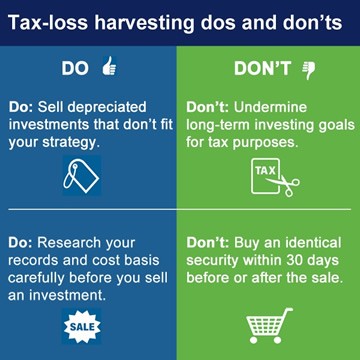How to Legally Reduce Your Tax Bill with TaxLoss Harvesting
Post on: 16 Март, 2015 No Comment

Investing in a tax deferred account is always optimal, but it’s not always possible. There’s only so much money you can put into them every year, and even if you aren’t maxing out your IRA and 401(k), it usually makes sense to have open an account that you can access before you retire. At its essence, tax-loss harvesting is a way to make a taxable account act a little like a tax-deferred account. 
What Tax-Loss Harvesting Is
Before getting into the mechanics of how this works, it is useful to review the math of why deferring taxes is advantageous.  Let’s say you hold some investments that you are able to grow at 10% a year on average (the historical rate of return of the stock market). Suppose you hold them for 35 years until you retire. Using the law of 72 we can quickly calculate that your investments will double in value approximately every 7 years (72 divided by 10 is about 7). Since there are five seven year periods in thirty-five years, this means that your investment will double five times over the course of your holding period. Of course an investment that doubles in value five times will go up far more than ten times in value (5 x 2), it will actually go up 32 times in value (2 x 2 x 2 x 2 x 2). 
Now let’s say that you have to pay 40% taxes on your investment gains every year. This would reduce your annual after-tax rate of increase from 10% to 6%. If you didn’t know anything about the way that compound arithmetic works, you might think that this would effect your final wealth by only 140% of your initial investment (the 4% difference times 35 years). If that was the case, your new investment would go up in value a still respectable 30.6 times. But of course this is not right. Using the law of 72 we can find that your new investment will double in value only every twelve years (72 / 12 = 6). So over the course of 35 years it will double about three times, going up 8 times in value overall (2 x 2 x 2). 
So an investor that is able to earn 10% returns will actually end up four times as wealthy as an investor that is only able to earn 6% returns. What is important about that is this: even if the investor has to pay taxes at the end of the period, he or she will still come out ahead investing in the tax-deferred account.
The cleanest way to avoid this brake on your returns from taxes is to maximize the use of retirement accounts like the IRA and the 401 (k). All investments in these accounts are completely tax-free. 
But even a taxable account can be managed in a way that minimizes the huge impact that taxes can have on wealth. The most basic (but often neglected) way to do this is simply to avoid selling positions that have a taxable gain associated with them, since you only owe these taxes when you actually realize the gains.
A more advanced way to defer paying taxes is to actively sell positions in which you have a loss. These tax losses can be used to offset any realized gains that you may incur through natural re-balancing. This is what is meant by tax-loss harvesting.
How to Do It
Two practical difficulties must be addressed to put a tax-loss harvesting strategy into practice: 1) When do you do it, 2) What do you re-invest sales into?
There’s no perfect trick for when to do it, but reasonable approaches are based on time of the year, investment holding period, and size of loss, or ideally a combination of the three.
At the end of the calendar year is a good time to go through your portfolio and scan for any losses you might want to realize, since you will be able to take these on your taxes that are due in a few short months.
Another good time to take a loss on an investment is 364 days after you bought it. That’s because if you take a loss before reaching the one year holding period, you can take it against any short-term gains that you might have (which are taxed at the ordinary income rate). If you wait longer than a year, it becomes a long-term capital loss which counts against any long-term capital gains that you may have.
Finally, if you have a loss that reaches some pre-set size that you determine is significant based on your own financial circumstances, you might decide to go ahead and take it. 
Once you have taken a loss, the question becomes what to re-invest the money from the sale into. The ideal strategy from an investment perspective would often be to buy back the very same investment that you sold, since you presumably sold it for a tax reason, not for an investment reason. This would allow you to get the tax advantage of the sale while not impacting your asset allocation. Unfortunately, the IRS has a strict rule against doing this. The wash sale rule stipulates that you must wait at least 30 days prior to re-purchasing an identical security. It is risky to sit on the sidelines this long, since the market could go up a lot in the mean time. If you are using ETFs, a better strategy is to immediately purchase a security that is similar, but not identical to the security that you sold. Because most mainstream ETFs closely track an asset class, there are usually plenty of good choices. The following table shows a few of them:














